When Alex, the taxi driver, dropped us off in La Trinidad, he instructed us what jeepney route to take on our way back, or should we take another taxi where to pass so that we could pass by Tam-awan Village.
But Alex ended up following his own instructions. We hired Alex as our tour guide, driver, and photographer, all rolled into one. He at first feigned hesitation, but agreed later on and charged us Php 300.00 an hour.

After strawberry farm, Alex took us to the Tam-awan Village. Located along Long-Long Road, Tam-awan Village was the brainchild of Chanum Foundation, Inc. The brochure of the Village said: "The Chanuma Foundation began to reconstruct Ifugao houses in Baguio with the view of making a model village accessible to people who have not had the chance to travel to the Cordillera interior...The village now has seven Ifugao huts and two Kalinga houses. Using the original materials and adding only new cogon roofs, traditional artisans reconstructed the houses and laid them out resembling the design of a traditional Cordillera village."

Apparently Chanum Foundation is not alone in its quest to preserve what little is left of the traditional culture. A village with a similar purpose could be found in Davao City. It's called Tribu K'Mindanawan Cultural Village. I remember the question my classmate in anthropology posed to our teacher: "If culture is dynamic, why should it be preserved?"
Two hours had already gone by since we hired Alex, and we were still in Tam-awan Village. Our taxi got expensive by the hour---one more hour of wandering in only one place meant another Php 300.00 for Alex. Thus, we told Alex to bring us to our next destination.
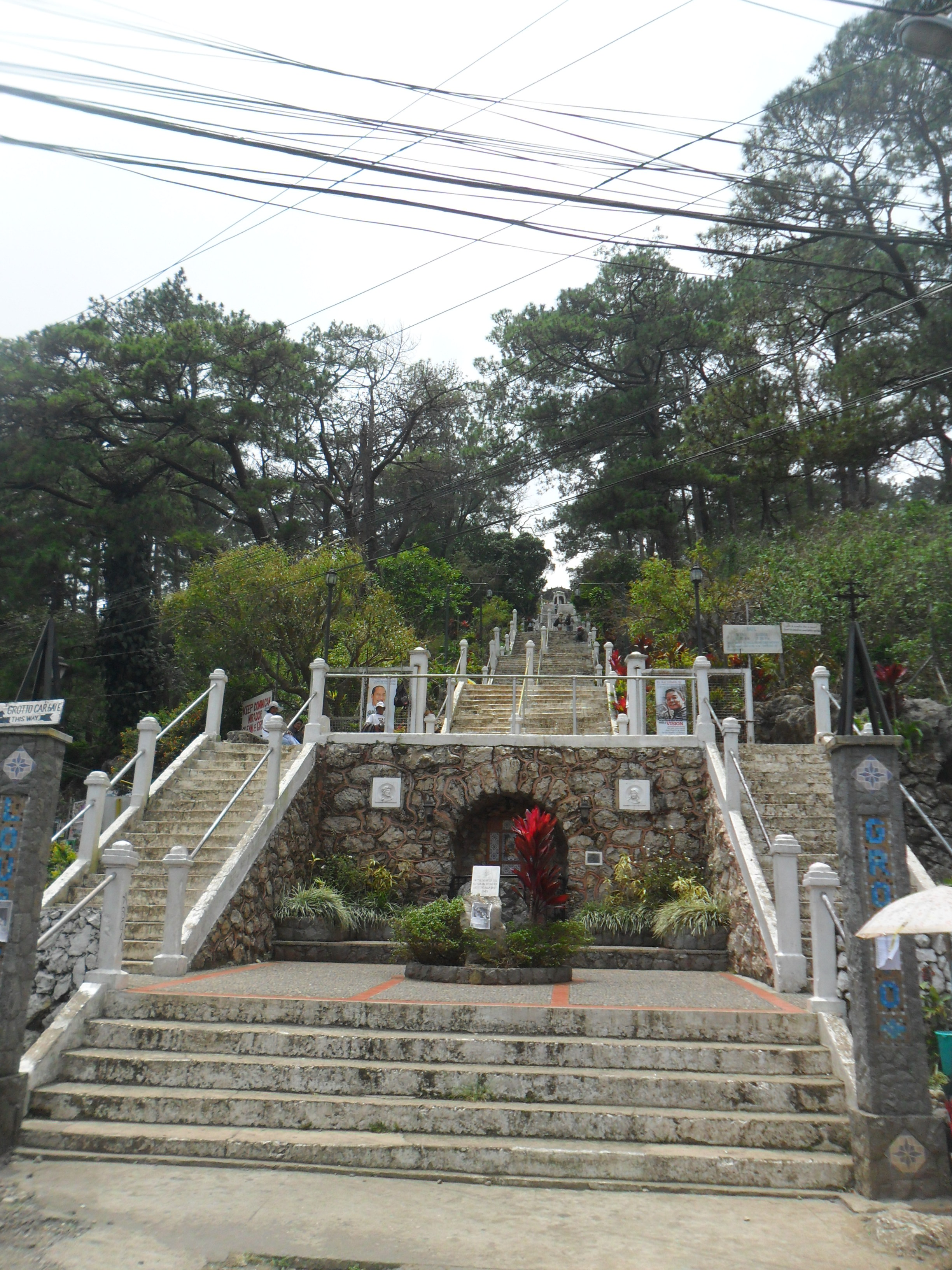
The Lourdes Grotto was our next stop. Alex wanted to take us as he looked for a parking space upstairs. But we told him we wanted to start on the very first step of the stairway to the Grotto.
We bought candles, then started our ascent. I tried to count exactly how many steps are there, but I lost count on the 70th step when a half-blind old woman offered me a bundle of three white roses.
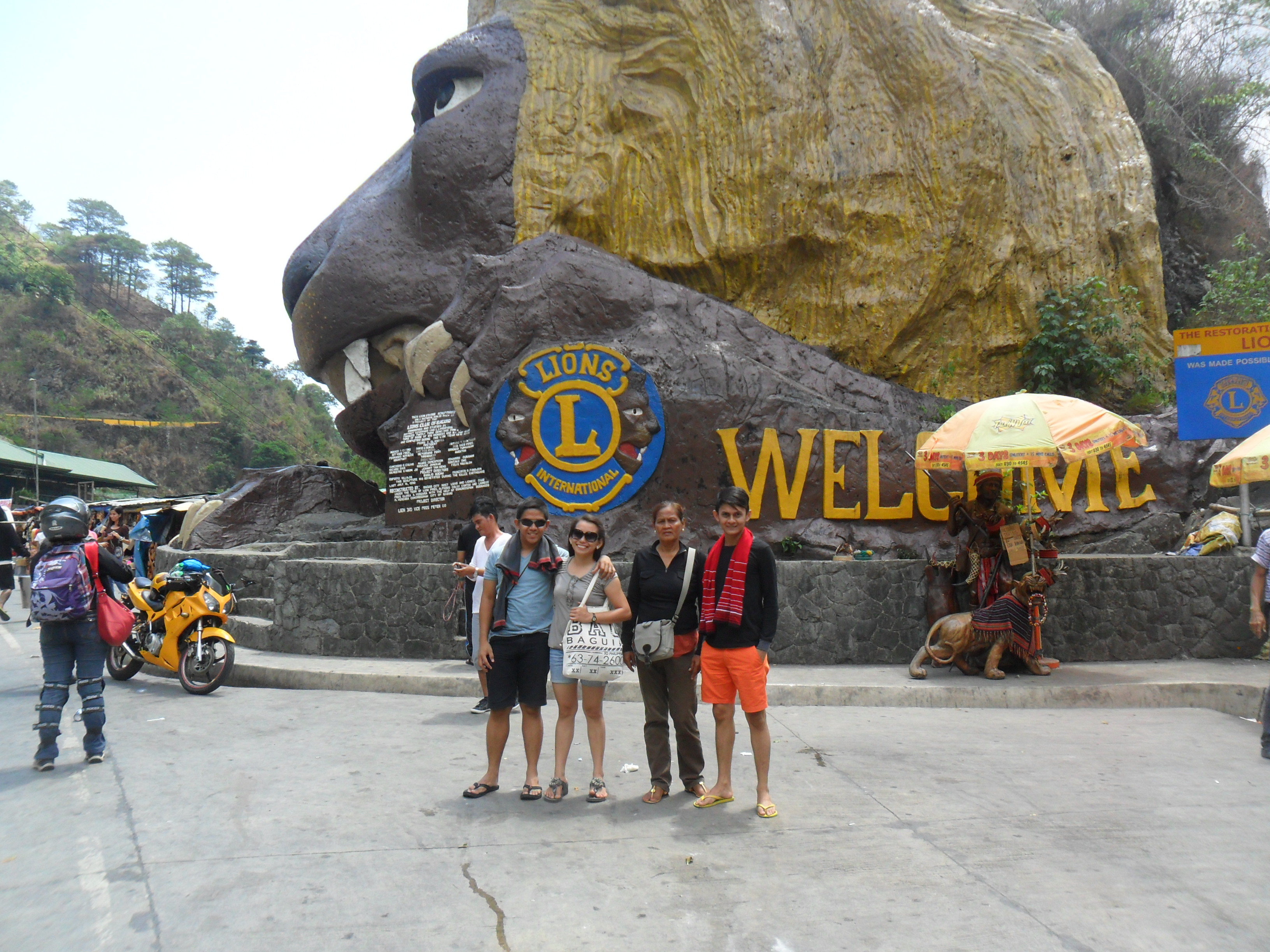
Minutes later, we were driving off to Kennon Road, stopped at the Lion's Head, then dropped by McDo to order lunch. Since we couldn't afford to waste our precious little time, we had lunch inside the taxi while on our way to Camp John Hay.
Inside the Camp is the Historical Core. Inside the Historical Core is a little cemetery with an intriguing title: The Lost Cemetery or Pet Cemetery or Cemetery of Negativism. The idea there, according to our nervous tourist guide, is whoever enters the cemetery must bury whatever negative feelings he had. Ex-Base Commander Major John Hightower thought of establishing it. His goal was to give the weary soldiers a chance to unload their negative feelings that eat away their enthusiasm.

It's I think a brilliant and emphatic piece of work. Other leaders, especially employers, fire their unenthusiastic employees, but Major Hightower acknowledged that soldiers are human beings---physically strong yet emotionally weak---and looked for ways to address that.

Then we went to our penultimate destination: The Mansion. On our way there we passed by the haunted #4 Laperal White House on Leonard Wood Road. Soon we found ourselves in Mines View in the midst of frenzied tourists.

We terminated Alex's service when we arrived in Mines View. I must say that for us cramming tourists, he's a good tutor, having crammed Baguio history, urban legend, myths, and tourism in four hours. But Alex did have another role. He was our chief counsel. "Take good care of your belongings while you're inside," Alex said, "and watch out for pickpockets."

















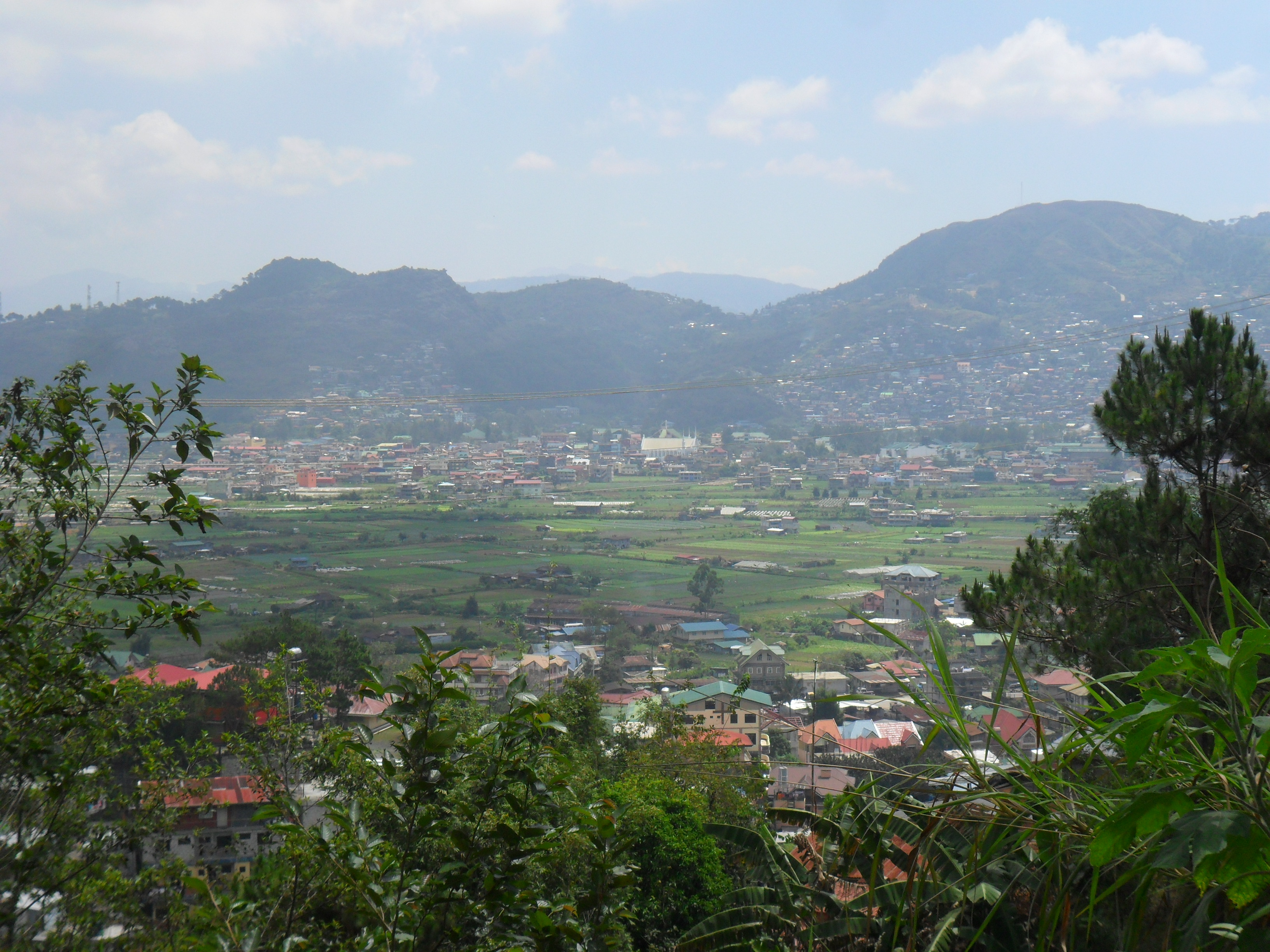



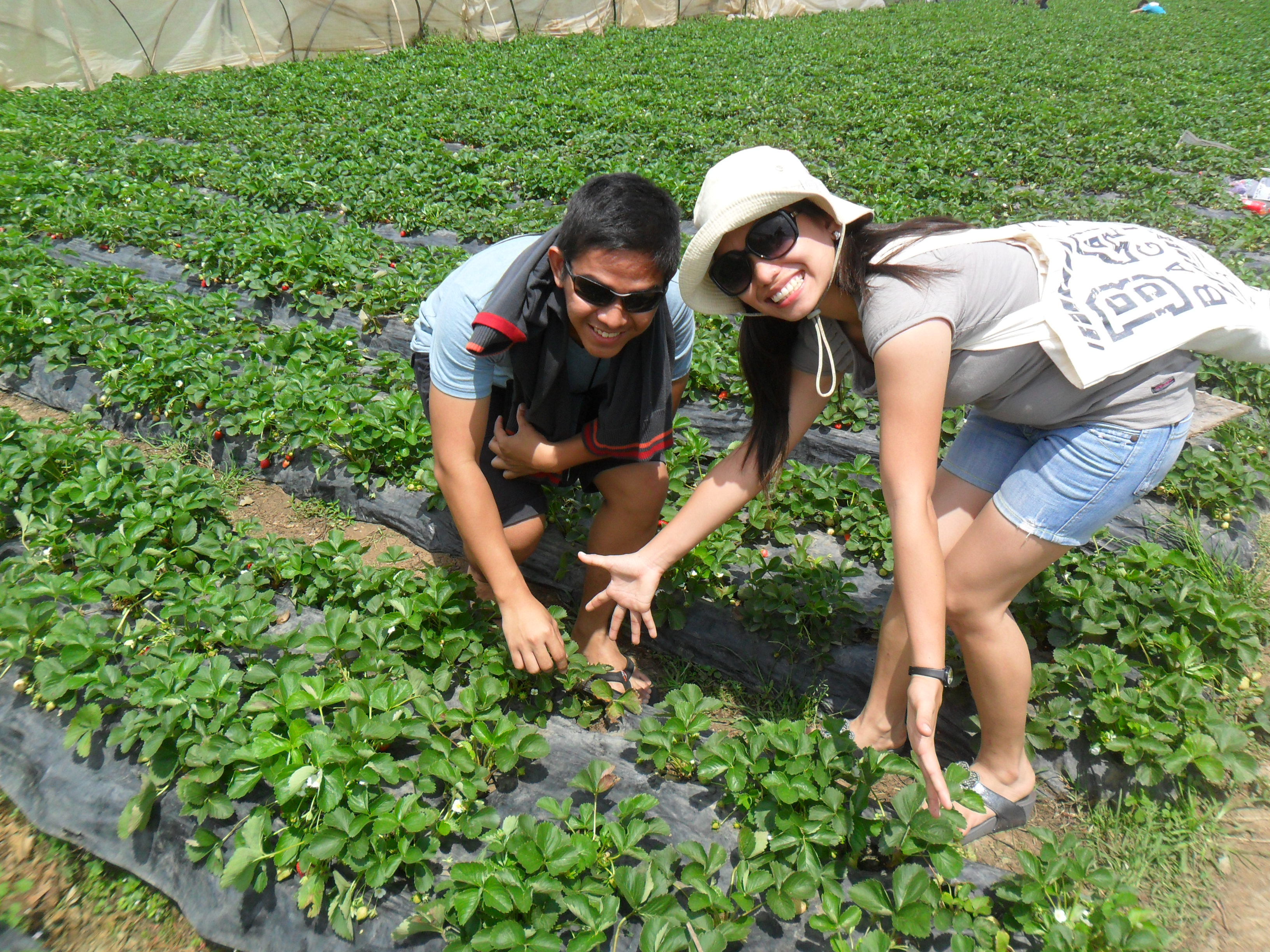
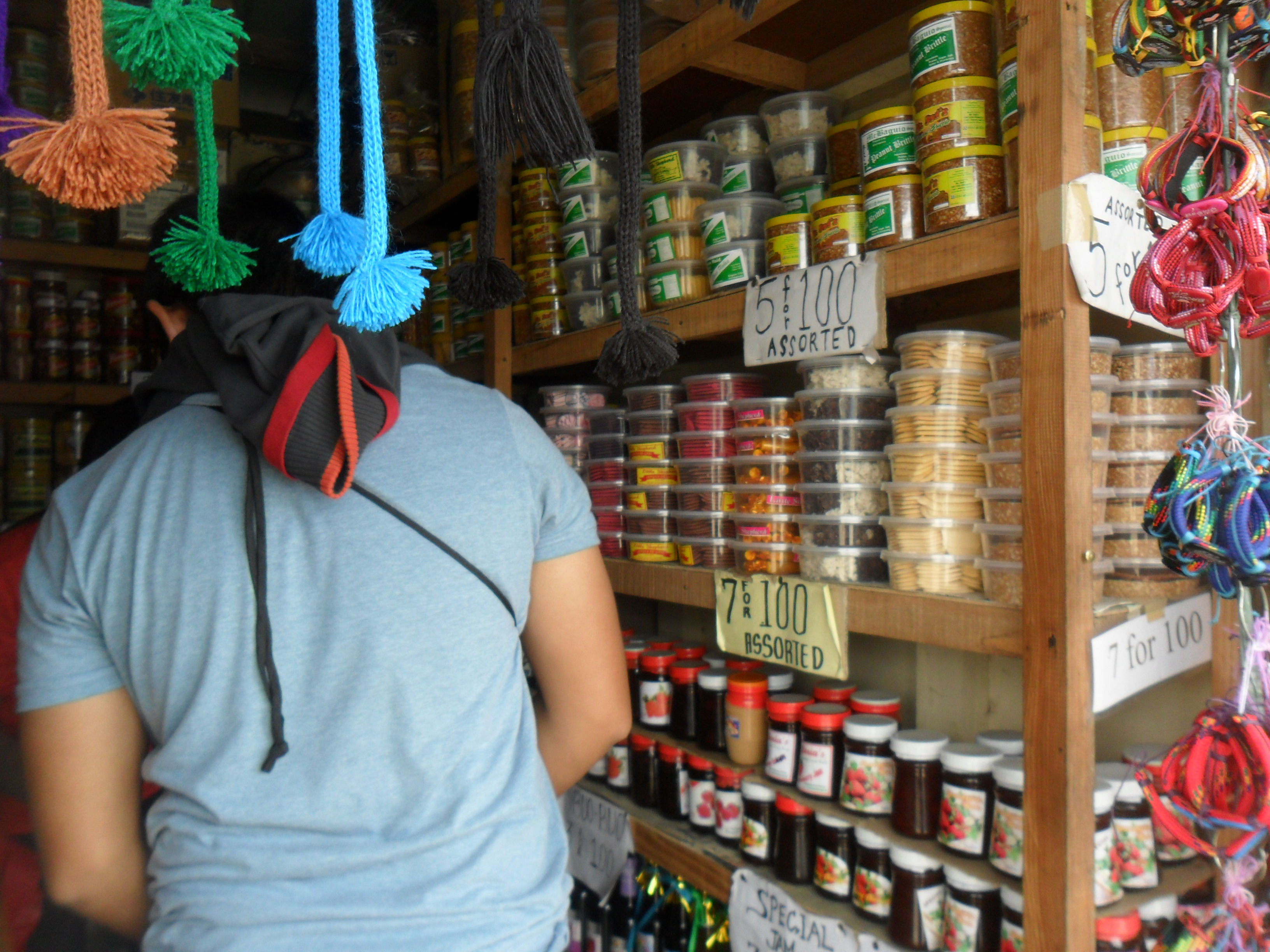





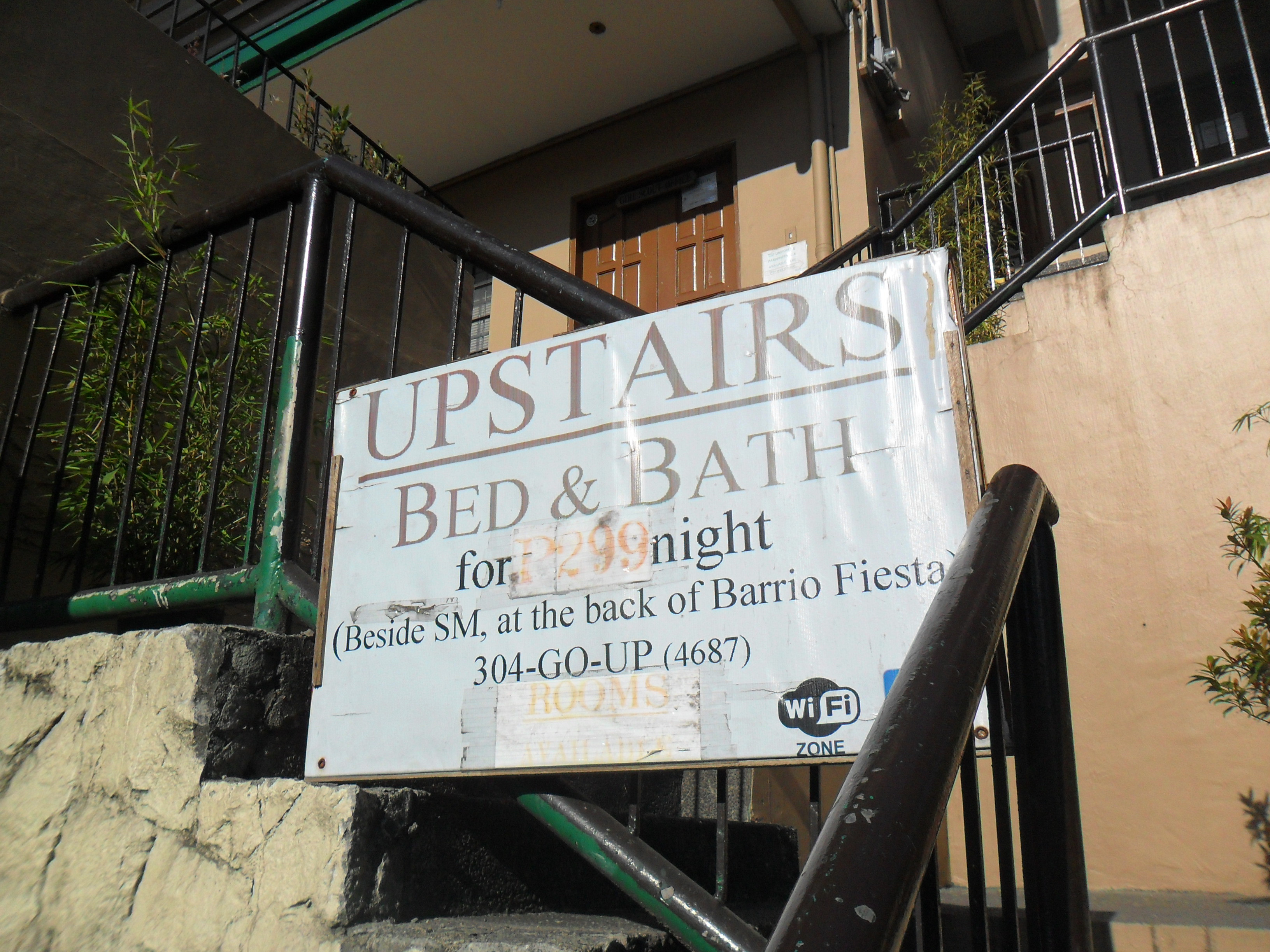
 Photo by Janice Sabnal[/caption]
Photo by Janice Sabnal[/caption] Holy Week has come to mean different things to different people. For the Catholics, it is the holiest of the Liturgical calendar which entails fasting, praying, or abstaining. It means doing things in moderation.
Holy Week has come to mean different things to different people. For the Catholics, it is the holiest of the Liturgical calendar which entails fasting, praying, or abstaining. It means doing things in moderation. Lake Agco is so popular a tourist spot one need not tell another where it is. Go to Kidapawan City, ask people around, and you’d get to Lake Agco with nary a trouble. And don’t bother wearing a pair of trekking slippers like I did, or bring all that mountain-climbing stuff—you’re not scaling Mt. Apo. Besides the road to Lake Agco is partly cemented; the portion not cemented, though, is paved, thanks to PNOC (Philippine National Oil Corporation) which developed the area to exploit its valuable geothermal energy.
Lake Agco is so popular a tourist spot one need not tell another where it is. Go to Kidapawan City, ask people around, and you’d get to Lake Agco with nary a trouble. And don’t bother wearing a pair of trekking slippers like I did, or bring all that mountain-climbing stuff—you’re not scaling Mt. Apo. Besides the road to Lake Agco is partly cemented; the portion not cemented, though, is paved, thanks to PNOC (Philippine National Oil Corporation) which developed the area to exploit its valuable geothermal energy. Of course, one thing we went to Lake Agco for was the Lake Agco. But it was not in the lake itself where we bathed. For Lake Agco is so hot a crocodile wouldn’t even dare inhabit it. We bathed in the mini pool being made to appear like a hot spring by tapping the steam from the lake, redirecting it to the pool through a pipe, and thereby heating the mini pool. Think of a pan filled with water heated by a gas stove. That’s how it works.
Of course, one thing we went to Lake Agco for was the Lake Agco. But it was not in the lake itself where we bathed. For Lake Agco is so hot a crocodile wouldn’t even dare inhabit it. We bathed in the mini pool being made to appear like a hot spring by tapping the steam from the lake, redirecting it to the pool through a pipe, and thereby heating the mini pool. Think of a pan filled with water heated by a gas stove. That’s how it works. Former Supreme Court Justice Isagani Cruz is my idol. Cruz is most notable for his well-written ponencia (Supreme Court judicial opinions), which never fail to amuse me, and his defense of individual liberty, which never fail to inspire me. Sadly, Justice Cruz is gone. Long live Justice Cruz.
Former Supreme Court Justice Isagani Cruz is my idol. Cruz is most notable for his well-written ponencia (Supreme Court judicial opinions), which never fail to amuse me, and his defense of individual liberty, which never fail to inspire me. Sadly, Justice Cruz is gone. Long live Justice Cruz.
 We'll be leaving for Baguio on April for a week-long vacation. Next to Boracay, Baguio is perhaps the most cliché vacation place. But we don't mind. We'll go there anyway.
We'll be leaving for Baguio on April for a week-long vacation. Next to Boracay, Baguio is perhaps the most cliché vacation place. But we don't mind. We'll go there anyway.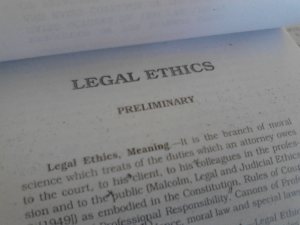
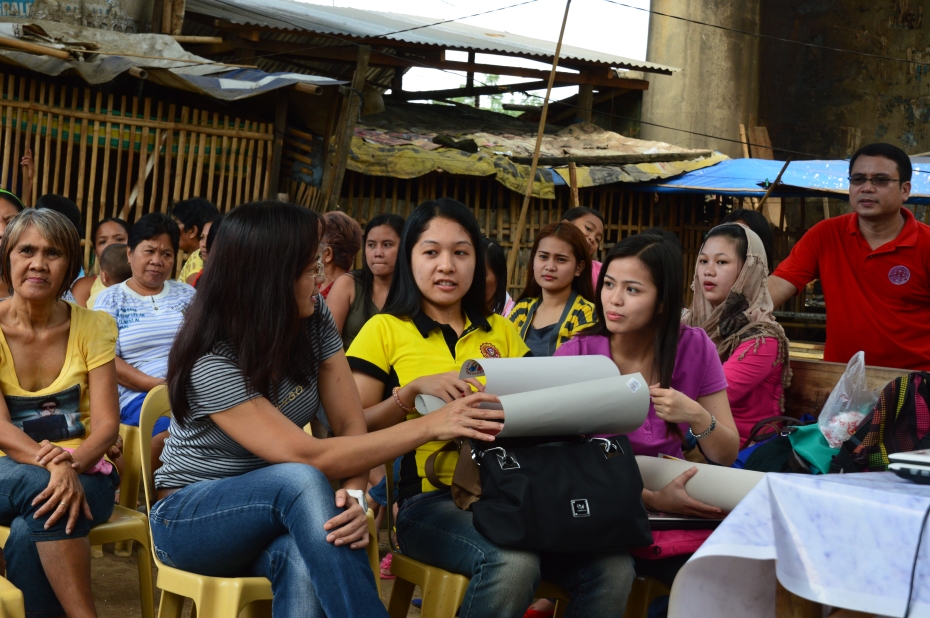 L-R: Atty. Eliza Lapiña , Jing Remolar, Dr. Tessa Mae Bongyan[/caption]
L-R: Atty. Eliza Lapiña , Jing Remolar, Dr. Tessa Mae Bongyan[/caption]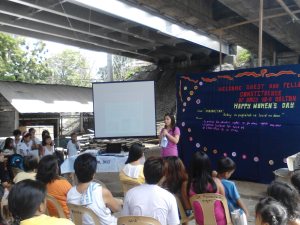 At the forum, Dr. Tessa Mae Bonguyan talked of the basic issues on women's health while Atty. Eliza Lapiña talked especially about R.A. 9262 or the Anti-Violence Against Women and their Children Act (VAWC).
At the forum, Dr. Tessa Mae Bonguyan talked of the basic issues on women's health while Atty. Eliza Lapiña talked especially about R.A. 9262 or the Anti-Violence Against Women and their Children Act (VAWC).
 Expulsion from the Garden of Eden by Giacinto Gimignani[/caption]
Expulsion from the Garden of Eden by Giacinto Gimignani[/caption] Source: www.diaryofsanjeev.blogspot.com[/caption]
Source: www.diaryofsanjeev.blogspot.com[/caption] During our Prelim Exam in Intellectual Property Law, I misspelled a word so simple even a Kindergarten pupil can spell it. A question was asked whether or not Joe Sison, Jr.'s infringement case would prosper.
During our Prelim Exam in Intellectual Property Law, I misspelled a word so simple even a Kindergarten pupil can spell it. A question was asked whether or not Joe Sison, Jr.'s infringement case would prosper.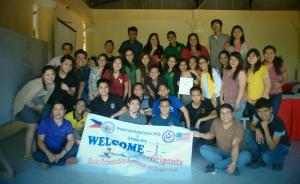 Delegates and organizers of the Basic Orientation Seminar on Legal Aid.[/caption]
Delegates and organizers of the Basic Orientation Seminar on Legal Aid.[/caption] Atty. Neil Pacamalan[/caption]
Atty. Neil Pacamalan[/caption]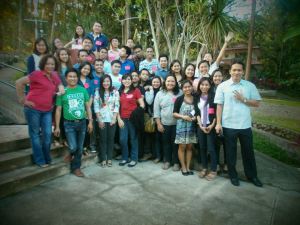 Officials from the US Embassy, US DOJ-OPDAT, UM, and MYVC join the delegates from UM College of Law and ADDU College of Law.[/caption]
Officials from the US Embassy, US DOJ-OPDAT, UM, and MYVC join the delegates from UM College of Law and ADDU College of Law.[/caption]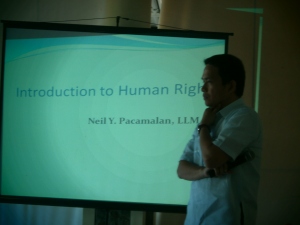 Atty. Neil Pacamalan, Cultural Affairs Specialist for Mindanao, Public Affairs Section, US Embassy, Manila.[/caption]
Atty. Neil Pacamalan, Cultural Affairs Specialist for Mindanao, Public Affairs Section, US Embassy, Manila.[/caption]